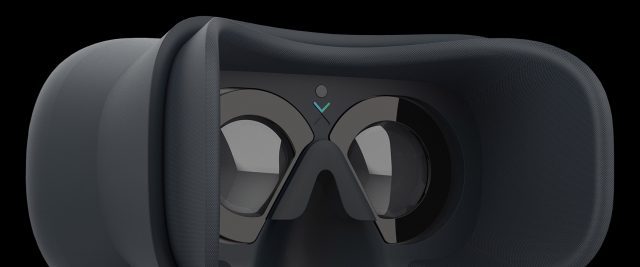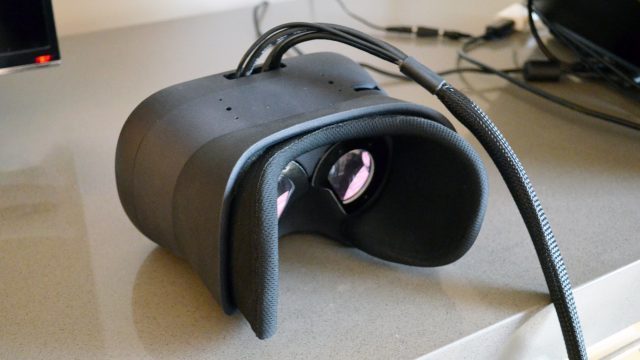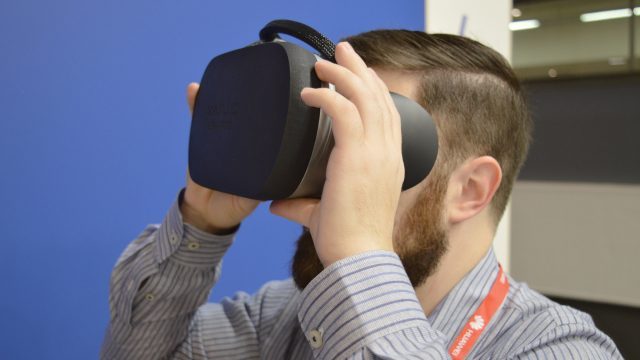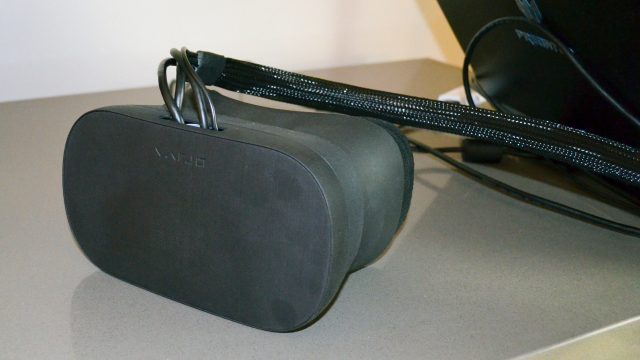Inside the Latest Varjo Prototype

Having had a chance to get my eyes into various Varjo prototypes over the course of the last year, including the most recent prototype this week at VRX 2018 in San Francisco, I’ve seen impressive progress as the company tackles the truly challenging part of creating a successful product—the last 5%.
Near-final Hardware
I wasn’t allowed to take any photos of the latest prototype, but I can describe it. Compared to earlier prototypes using 3D printed parts, the latest version is using near-final plastics and has a more refined design. This is also the first time I’ve seen the headset equipped with a headstrap, which looks and functions quite similarly to other rigid straps: there’s a part which cradles the back of the head, a top strap which can be adjusted, and a knob on the back to tighten the sides.
The headset is a bit bulky, but not unusably so, and now has active cooling (a fan which spits heat out the top of the headset). Varjo’s Chief Product Officer, Urho Konttori, said about the need for active cooling, “[There’s essentially] two VR headsets in this headset,” referring to the extra pair of displays (and electronics to drive them) and the heat thus generated.

The shipping version of the Varjo headset will lack integrated audio, which was decided because they expect that high-end enterprise customers will often not need audio for their purposes, or choose to use high-grade headphones if they do, Konttori said.
Smartly, Varjo also added an ‘app button’ to the top if the headset, allowing the wearer to perform simple actions like interface selections without needing to pick up controllers. That ought to be especially useful for their customers which are likely to be using the headset for pure viewing more often than interaction.
Eye-tracking
This is also the first time Varjo is showcasing the headset’s eye-tracking technology which they claim is built in-house and is the most accurate and precise solution among any currently available. They say they plan to release “neutral studies” in the near future to support that claim, and specifically say their solution achieves an accuracy of 1° and precision of 0.2°.
Varjo has been talking about the possibility of creating a hardware foveated display, meaning that the high-resolution region would follow your gaze (thanks to eye-trakcing) to always be at the center no matter where you look, but they opted to bring the first version of their headset to market sooner rather than later, leaving hardware foveation still in R&D. The company isn’t ruling it out for future headsets, but eye-tracking in the first headset will only be used for software-based purposes.
Visuals

While there hasn’t been a massive visual change from the last prototype, steady refinements continue. Earlier prototypes had a quite noticeable halo effect at the border between the high resolution and low resolution portions of the view. On the latest prototype this has been reduced quite a bit, leaving a surprisingly seamless blend between the displays. It isn’t invisible, but it has come far enough that it’s unquestionably worth the slight artifact for the benefit of retina resolution at the center of the view.
Tether

The headset’s tether has been extended to an impressive 10 meters (33 feet) thanks to a new fiber optic cable which Varjo says maintains the bandwidth needed to drive the headset’s four displays even at that distance. It’s also surprisingly thin, about the same size as the tether on any consumer headset. The tether connects to a breakout box near the host PC which splits out cables which connect to a handful of ports (display and USB).
Quick Fixes
On the latest prototype there’s a few issues which the company told me are easy fixes which will come before launch. For one, I saw internal reflections on the edges of the high-res display and some screen-tearing too. Varjo’s Chief Product Officer, Urho Konttori, told me that the internal reflections were due to a missing anti-reflective coating on the latest lenses and that the screen tearing was related to a driver issue; both to be fixed before launch. I believe that because I’ve not seen either of those issues on previous prototypes.
Another issue is that the latest prototype seems to have a smaller total field of view than previous version. Konttori said this was caused by the foam face padding being thicker than intended, not allowing the eyes to get as close to the lenses as before. He also assured that this would be fixed ahead of launch.
And finally, Varjo is sending off their displays to Technicolor ahead of launch for a precise color and luminance calibration, which will help to further blend the displays together.
– – — – –
Given the asking price and capabilities of Varjo’s headset, it’s becoming increasingly clear which kinds of companies will see the most value from the product, namely: major enterprises that deal in high-cost design (architectural, industrial, automotive, etc) and likely companies needing to train for high-risk/high-cost/high-fidelity tasks like surgery. For use-cases which don’t demand retina fidelity, Varjo’s headset will likely be overkill, but for those that do it stands out as the singular option.






